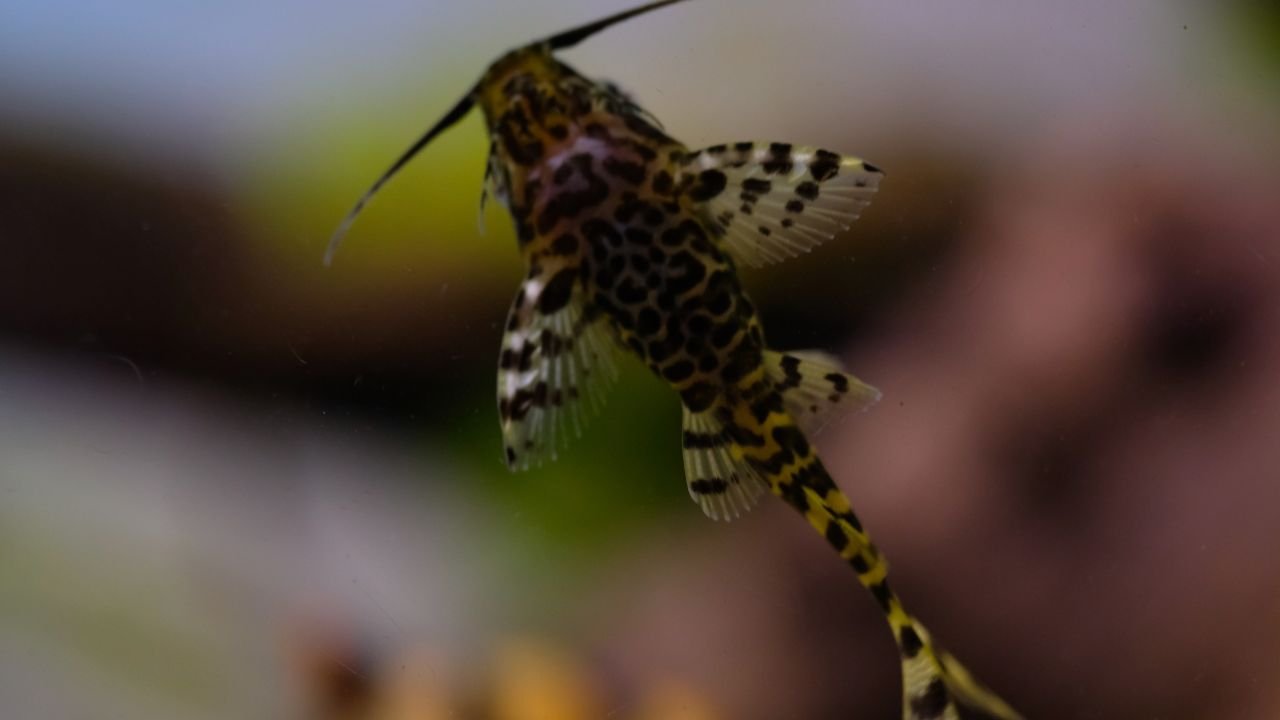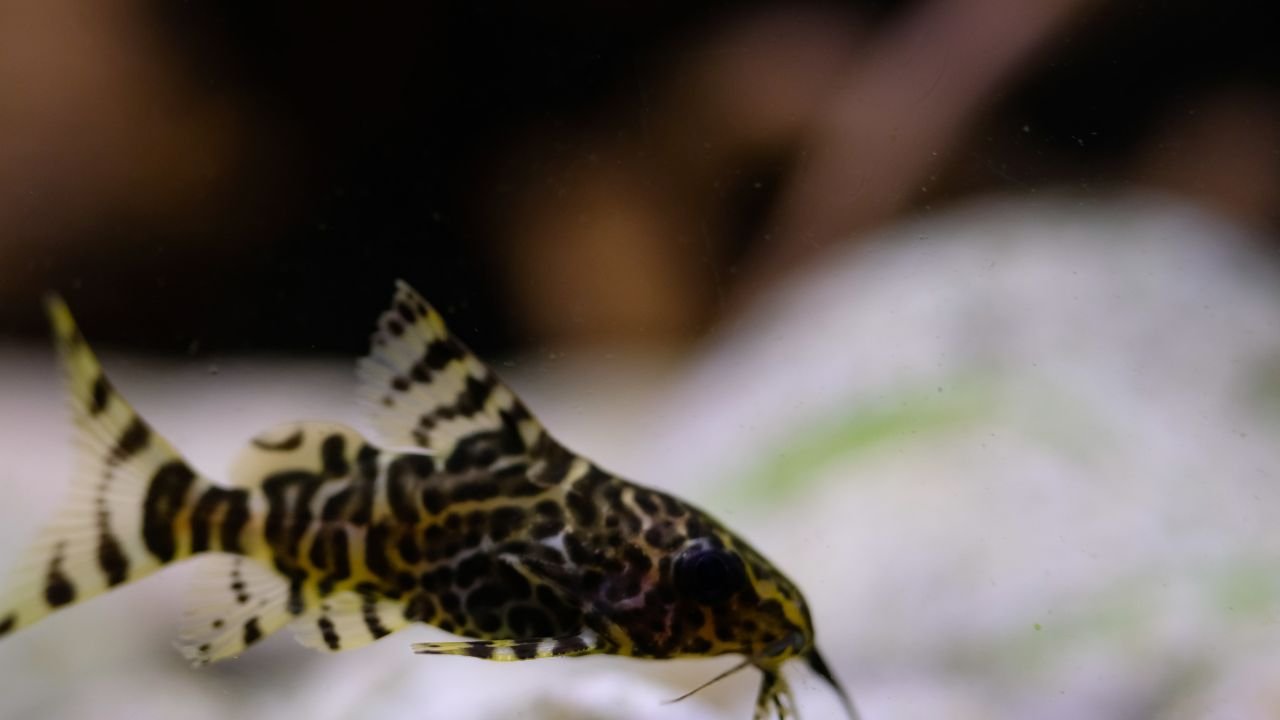Synodontis Catfish Care Guide: Essential Tips for Beginners
Synodontis catfish are popular fish known for their cool appearance and interesting behavior. They are great for aquariums and easy to care for if you understand their needs. This guide will help you take care of Synodontis catfish, covering tank requirements, feeding, and more.
Introduction to Synodontis Catfish
Synodontis catfish belong to the Mochokidae family and are native to Africa’s freshwater rivers and lakes. There are over 100 species, and they have unique features such as large heads, whisker-like barbels around their mouths, and long bodies. These fish are generally calm, but some types can be a bit territorial in smaller tanks.
Synodontis catfish are omnivores and enjoy scavenging, which makes them great for cleaning up leftover food in the tank. They get along with many types of fish, but caution is needed when choosing tankmates, especially with fast swimmers or aggressive species.
- Aquarium Hobby for Beginners
- Caring for Bubble-Eye Goldfish
- How to Care for Neon Tetras
- Choosing the Right Aquarium Size
- Best Aquarium Fish Food
Tank Size and Setup
Synodontis catfish can grow quite large, so choosing the right tank size is important for their health.
Recommended Tank Size:
- Single fish: A 30-gallon tank is the minimum size.
- Larger species: Some species, like Synodontis eupterus, need a 50-gallon tank or more. They can grow up to 12 inches.
- Group size: For 3–5 fish, a 55–75-gallon tank is best.
Tank Setup Tips:
- Substrate: Use soft sand or smooth gravel. Synodontis catfish like to forage and need a gentle surface.
- Hiding spots: These fish are nocturnal and need hiding places to rest during the day. Use caves, rocks, and driftwood.
- Decor: Add decorations like smooth rocks and plants to mimic their natural environment.
- Filtration: Use strong filtration to keep the tank clean, but avoid strong currents. Synodontis catfish prefer a moderate flow.
Water Parameters
To keep your Synodontis catfish healthy, the water must meet certain conditions. They are hardy, but the right environment is essential for long-term health.
Water Conditions:
- Temperature: 74°F to 80°F (23°C to 27°C)
- pH level: Neutral to slightly acidic, around 6.5 to 7.5
- Hardness: Soft to medium-hard (4–18 dGH)
- Ammonia/Nitrite/Nitrate levels: Keep ammonia and nitrites at 0 ppm. Nitrates should be below 20 ppm to maintain clean water.
Filtration:
Synodontis catfish are not picky about filtration, but a hang-on-back (HOB) or canister filter is ideal. These filters help keep the water clean without creating a strong current.

Feeding Synodontis Catfish
Synodontis catfish eat both plant and animal matter. In the wild, they feed on worms, insects, and algae. To mimic this in your tank, provide a balanced diet.
Recommended Diet:
- Pellets: Use sinking pellets designed for bottom feeders.
- Frozen foods: Brine shrimp, bloodworms, and daphnia are good treats.
- Live food: Offer earthworms, blackworms, and other live foods occasionally.
- Vegetables: Provide blanched spinach or zucchini to meet their nutritional needs.
Synodontis catfish are nocturnal, so feed them in the evening or when the lights are dim. They are most active at night and can find the food more easily.
Lifespan and Growth
Synodontis catfish can live for 10 to 15 years if cared for properly. They grow at a moderate rate, reaching 6 to 12 inches depending on the species. Larger species, like Synodontis eupterus, can grow up to 15 inches.
Growth Timeline:
- Young Synodontis: They grow slowly in their early years.
- Full size: It can take 3–5 years to reach their adult size.
Behavior and Compatibility
Synodontis catfish are usually peaceful and social, but their behavior can vary.
- Nocturnal: They are active at night, foraging and exploring the tank.
- Territorial: Some species may become territorial, especially if they lack space or hiding spots. Larger tanks help reduce aggression.
- Group behavior: Though solitary by nature, keeping 3–5 fish together can reduce territorial tendencies.

Tankmate Compatibility:
Synodontis catfish do best with peaceful tankmates. They get along with bottom-dwelling fish, livebearers, and community fish. Avoid aggressive or fast-moving species that may stress them.
Breeding Synodontis Catfish
Breeding Synodontis catfish can be difficult but rewarding. While rare in home aquariums, it’s possible with the right setup.
Breeding Tips:
- Breeding tank: Set up a separate tank with soft substrate and plenty of hiding spots.
- Water conditions: Slightly warmer water (around 80°F) and a slightly acidic pH can help encourage breeding.
- Spawning: Female Synodontis lay eggs in crevices or hidden spots. Once the eggs hatch, the fry need special care and a separate feeding schedule.
Conclusion
Caring for Synodontis catfish is fun and easy. These fish are simple to care for if you provide the right tank size, water conditions, and food. Their cool appearance and behavior make them great for a peaceful tank. By following these tips, you can help your Synodontis catfish live a long, healthy life.
(FAQs)
Are Synodontis catfish aggressive?
No, they are peaceful. However, they can be territorial in smaller tanks. Keeping them in larger groups and providing hiding spots can help reduce aggression.
How big do Synodontis catfish get?
Most grow between 6 to 12 inches. Some, like Synodontis eupterus, can grow up to 15 inches.
How long do Synodontis catfish live?
They live for 10 to 15 years with proper care.
How many Synodontis catfish should be kept together?
Keep 3–5 together to reduce territorial behavior and keep them comfortable.
What do Synodontis catfish eat?
They eat sinking pellets, live or frozen foods like worms and shrimp, and vegetables like spinach or zucchini.


